Realizing Children’s Rights in Singapore
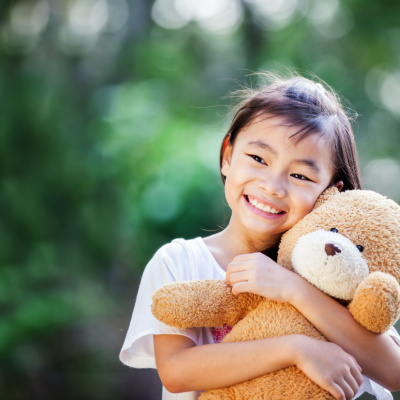
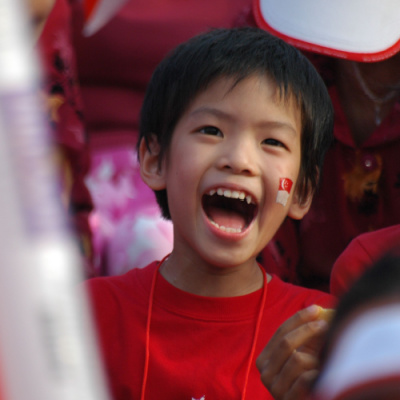
Children in Singapore are protected by a comprehensive system of law that ensures fundamental rights and adequate standards of living. However, several overly restrictive criminal laws and non-inclusive and discriminatory regulations put children at risk. The main areas that require a change of direction to better implement the rights of Singaporean children include child labor, juvenile justice, freedom of expression, sexual orientation, and gender identity.

Children’s Rights Index: 8,39 / 10
Yellow level: Satisfactory situation
Population: 5.9 million
Pop. ages 0-14: 12.41%
Life expectancy: 83.93 years
Under-5 mortality rate: 1.85 ‰
Singapore at a glance
Singapore is a city-state consisting of one main island and other smaller islands, located at the southern end of the Malacca Peninsula. While being one of the richest states in the world, its strategic location at the mouth of the Strait of Malacca has made the country one of Asia‘s major trading centers. Given its small territory and high population, it is one of the most densely populated countries on the planet. Officially, the urbanization rate is 100% but more rural areas can be found in the northern part and the smaller islands (World Population Review, 2022).
The Chinese (74.3%) make up the majority of the resident population, followed by Malays (13.5%) and Indians (9%), but to these must be added 1,642,000 non-residents, workers or students with temporary permits, who together make up 29% of the total population (World Population Review, 2022). These numbers and a multi-ethnic culture have meant that many religions are practiced in Singapore, those with the most adherents being Buddhism (31%), Christianity (19%), Islam (15.5%), Taoism (9%) and Hinduism (5%), while 20% are non-religious (World Population Review, 2022).
From a political point of view, Singapore is a parliamentary republic, with a unicameral legislative structure elected every five years. In spite of a liberal economic system and a political-institutional structure that is considered not very corrupt, Singapore has a political regime that severely restricts the freedoms of expression, association and demonstration and the full implementation of other important rights (Human Rights Watch, 2022).
Status of children’s rights [1]
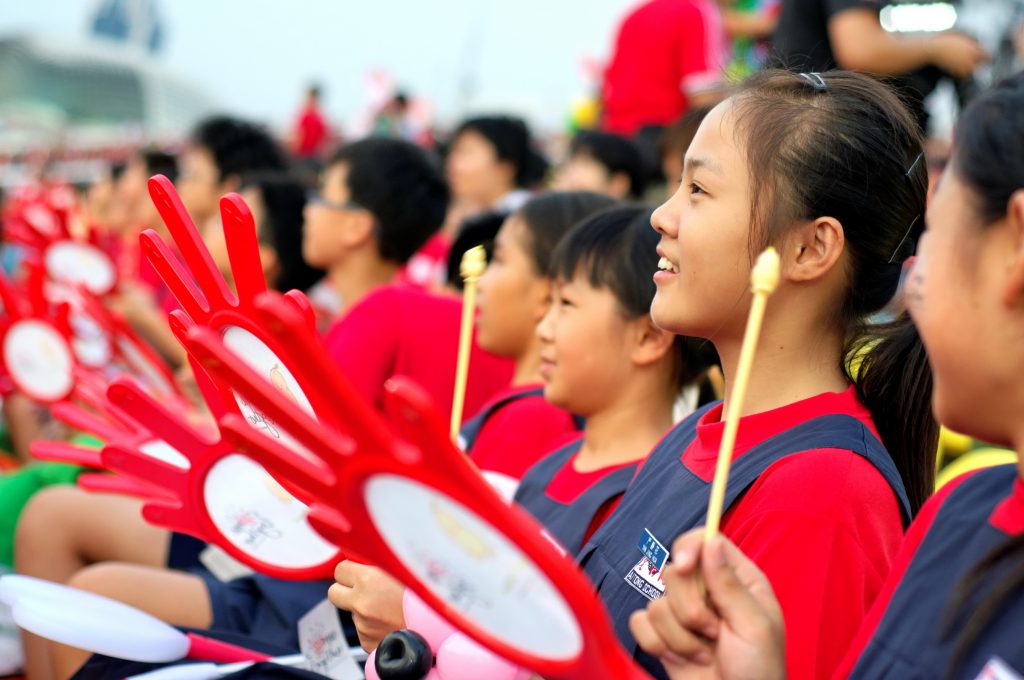
Formal protection of children in Singapore began with the 1927 Children’s Ordinance whose aim was “to afford children protection against cruelty” (Ministry of Community Development, Youth and Sports, 2005). In June 1946, following the Second World War, Singapore’s first Social Welfare Department was established to consider various areas of social policy. From this mandate came the enactment in 1949 of the much more comprehensive Children and Young Persons Ordinance, the precursor of our present-day legislation (Ministry of Community Development, Youth and Sports, 2005).
Nowadays the Ministry of Community Development, Youth and Sports (MCYS) bears the statutory responsibility to protect children from abuse and neglect, with duties spelled out in the current Children and Young Persons Act (CYPA). The CYPA provides legal protection for children below the age of fourteen, as well as for young persons aged fourteen and below sixteen.
In October 1995, by acceding to the United Nations Convention on the Rights of the Child (CRC), Singapore made a commitment to meet the minimum standards in the provision of health care, education, and legal and social services for children and as of today, it is respecting this mandate. In many areas, provisions for children were already well above these minimum standards. The principle, “in the best interests of the child” has since guided Singapore’s policies and service provision for children and young persons, including the area of child protection (Ministry of Community Development, Youth and Sports, 2005).
Singapore has ratified or acceded to the following international agreements related to human rights:
Convention on the Elimination of All Forms of Discrimination Against Women (CEDAW), Convention on the Rights of the Child (CRC), Optional Protocol to the CRC on the involvement of children in armed conflict in 2008, International Convention on the Elimination of All Forms of Racial Discrimination.
However, as of 2022, Singapore has not ratified the Convention against Torture and Other Cruel, Inhuman or Degrading Treatment or Punishment, the International Covenant on Civil and Political Rights, the Second Optional Protocol on the ICCPR aiming at the abolition of the death penalty, the International Convention on the Elimination of All Forms of Racial Discrimination, the International Covenant on Economic, Social and Cultural Rights, or the Convention on the Rights of Persons with Disabilities (Human Rights Watch, 2022).
Addressing the needs of children
Right to education
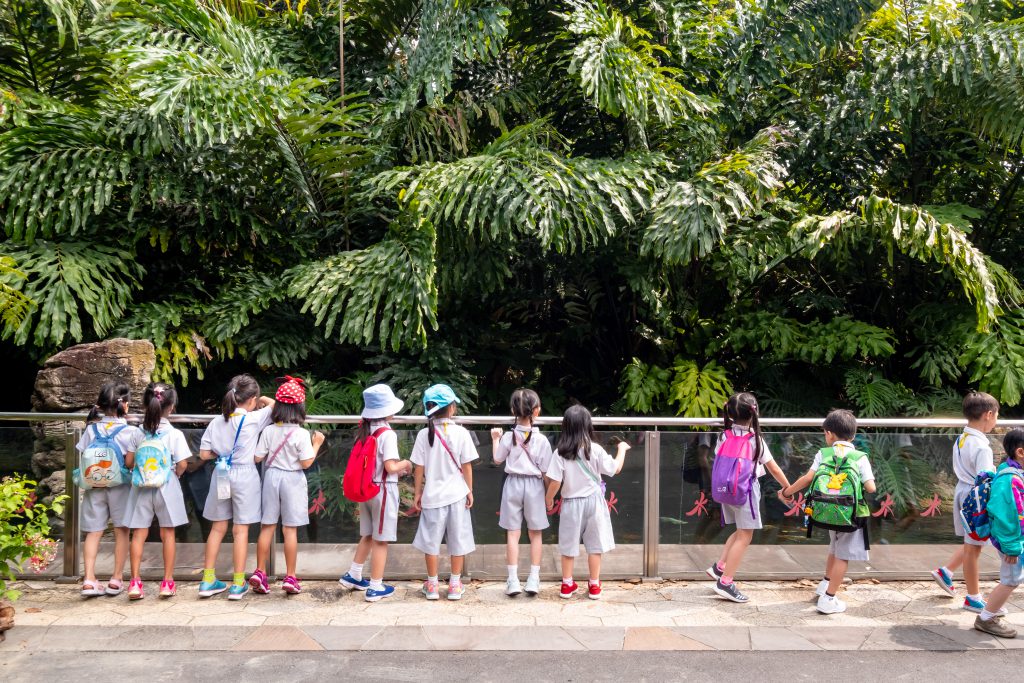
Beginning in 2003, education became compulsory for all children born after January 1, 1996. Education in Singapore is not free, but the government heavily subsidizes school fees.For this reason, Singapore’s education system is considered one of the best in the region. In fact, the education facilities in Singapore have improved dramatically since independence. The restructuring of primary and secondary education, combined with the introduction of a system of vocational training, allows children to continue their education until they are sixteen years old.
Right to freedom
The Government of Singapore uses overly restrictive criminal laws and civil defamation suits to harass and prosecute critical voices, including activists, bloggers, and journalists (Human Rights Watch, 2022).
Human rights defenders, including children, are not protected against police abuses and are at severe risk of being sentenced for taking part in protests or for expressing critical political views.
Although Singapore has a developed social welfare system to address children’s needs, there are no provisions to ensure the right of the child to express his views and opinions in protective proceedings (Yale University, 2016). Additionally, in schools, children do not have the right to express their opinions. The government uses discipline, which does not encourage children to express their own ideas but rather reinforces their feeling of being constantly bullied.
Risk factors → Country-specific challenges
Violence
In schools, corporal punishment is practiced – especially for boys. This type of practice is difficult to control and measure. The law on the regulation of schools allows physical abuse on the palms of the hands or on the buttocks to correct behavior, notably for boys. These types of corporal punishment are used in centers for detoxification, detention centers, and military centers, where all boys are supposed to be trained for two years.
Unfortunately, some forms of discrimination persist, especially against girls, children with disabilities, and the non-citizens of Singapore. Data on children with disabilities are very limited and difficult to access. The situation of disabled children is particularly concerning, especially for those older than six years old, since compulsory education does not seem to apply to them any more than it does for immigrant children.
Child labour
The Government of Singapore ratified ILO Convention No. 182, Worst Forms of Child Labor, on June 14, 2001, but has not ratified ILO Convention No. 138, Minimum Age for Admission to Employment (The United States Trade Representative, 2022).
In fact, child labour remains a major scourge throughout Southeast Asia. Indeed, even if statistical data on economic activity for children under the age of fifteen is unavailable as Singapore does not collect such information, it is well established that child labour is part of the Singaporean economy (The United States Trade Representative, 2022).
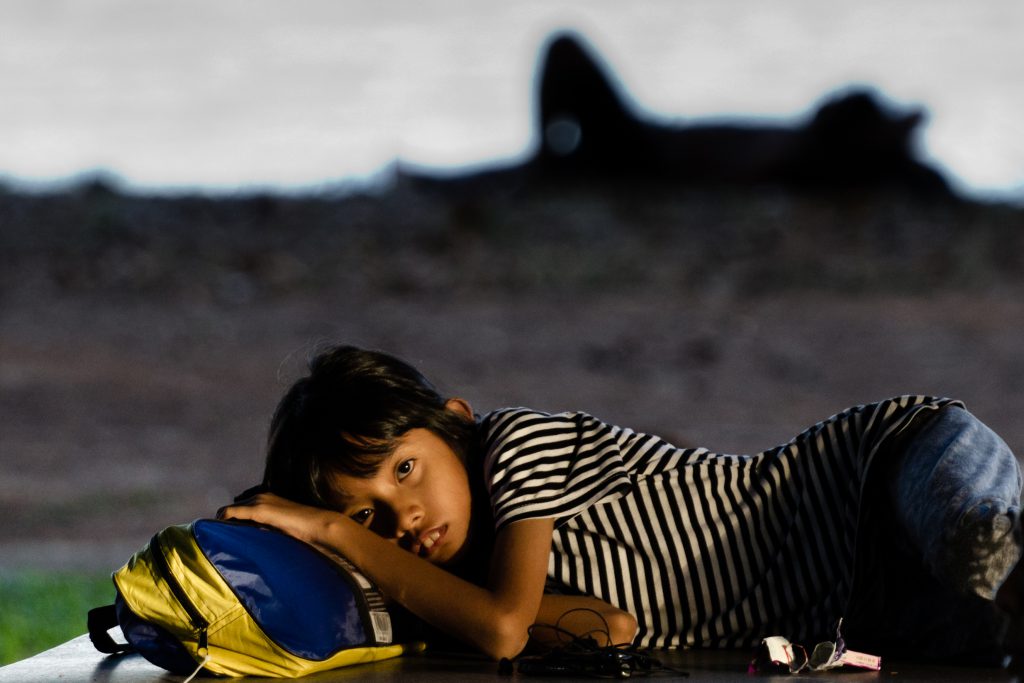
Under the Employment Act specifically, children may perform light work at age twelve. Children under the age of fourteen may only be employed in an industrial undertaking if it is a family-operated business, while youth between the ages of fourteen and sixteen can work in an industrial undertaking if they possess a medical certificate certifying their fitness for employment (The United States Trade Representative, 2022). Slavery and forced labour are prohibited under Singapore’s Constitution as well as trafficking in children are prohibited by the Children and Young Persons Act and Women’s Charter.
Sexual orientation and gender identity
The rights of LGBTQ+ people in Singapore are severely restricted. In fact, Singapore is one of nine countries in Asia – alongside Bangladesh, Bhutan, Maldives, Pakistan, Sri Lanka, Brunei, Malaysia and Myanmar – that criminalizes male-to-male sexual relations. Female-to-female sex is not criminalized but at the same time restricted.
There are no legal protections against discrimination on the basis of sexual orientation or gender identity. Singapore precludes LGBTQ+ groups from registering and operating legally (Human Rights Watch, 2022).Teenagers part of the LGBTQ community live in a difficult environment as most families do not accept their sexual orientation and kick them out of their homes (Ministry of Social and Family Development, 2021).
The Minister for Social and Family Development declared that the current options for young and vulnerable teens kicked out of their homes for reasons such as their sexual orientation or gender identity are shelters run by LGBTQ+ community groups to which the Government is considering extending financial support (Ministry of Social and Family Development, 2021). Despite the good intentions, the reality is that members of all ages belonging to the LGBTQ community face major discrimination (Human Rights Watch, 2022).
Children and justice
In Singapore, persons under the age of eighteen convicted of an offense cannot be sentenced to capital punishment but may be sentenced to corporal punishment and life imprisonment. Indeed, the use of corporal punishment is a common accessory penalty (Human Rights Watch, 2022). Furthermore, corporal punishment is lawful as a sentence for juvenile offenders and for medically fit males ages sixteen to fifty, while caning is mandatory for a wide range of crimes. Particularly, children aged between seven and fifteen should be caned up to ten strokes with a light rattan, and older young people up to 24 strokes with a rattan up to 1.27 cm in diameter (CRIN, 2010). It is worthwhile to note that such caning constitutes torture under international law.
The main laws governing juvenile justice are the Children and Young Persons Act 1993, the Penal Code 1872 and the Criminal Procedure Code 2010(CRIN, 2010). The minimum age of criminal responsibility is set by the Penal Code at 7 and the Criminal Procedure Code defines a juvenile as from 7 to 15 (CRIN, 2010). Persons aged 16-17 are tried as adults.
Moreover, while capital punishment is unlawful for child offenders, life imprisonment is available also for persons under the age of eighteen. Specifically, children aged between seven and fifteen may be sentenced to life imprisonment only in case of culpable homicide and attempted murder, and persons aged between 16 and17 for a wider range of crimes (CRIN, 2010).
Written by Federica Versea
Internally proofread by Aditi Partha
Last updated on 22 August 2022
Bibliography:
CRIN. (2010). Inhuman sentencing of children in Singapore. Taken from CRIN – Child Rights International Network: https://archive.crin.org/sites/default/files/singapore_inhuman_sentencing.pdf accessed on 11 August 2022.
Human Rights Watch. (2022). Singapore Events of 2021. Taken from Human Rights Watch : https://www.hrw.org/world-report/2022/country-chapters/singapore accessed on 10 August 2022.
Human Rights Watch. (2022). Human Rights Watch. Taken from Singapore Events of 2021: https://www.hrw.org/world-report/2022/country-chapters/singapore on 10 August 2022.
Human Rights Watch. (2022). Singapore 2021 Human Rights Report. Taken from Human Rights Watch: https://www.state.gov/wp-content/uploads/2022/03/313615_SINGAPORE-2021-HUMAN-RIGHTS-REPORT.pdf accessed on 10 August 2022.
Ministry of Community Development, Youth and Sports. (2005). Protecting Children in Singapore. Taken from Ministry of Community Development, Youth and Sports: http://www.iccwtnispcanarc.org/upload/pdf/7627407937Protecting%20Children%20in%20Singapore%20.pdf accessed on 12 August 2022.
Ministry of Social and Family Development. (2021). Shelter For Teens Kicked Out Of Homes Due To Sexual Orientation Or Gender Identity. Taken from Ministry of Social and Family Development: https://www.msf.gov.sg/media-room/Pages/Shelter-for-Teens-Kicked-Out-of-Homes-Due-to-Sexual-Orientation-or-Gender-Identity.aspx accessed on 9 August 2022.
The United States Trade Representative. (2022). Laws Governing Exploitative Child Labor Report: Singapore. Taken from The United States Trade Representative: https://ustr.gov/archive/assets/Trade_Agreements/Bilateral/Singapore_FTA/Reports/asset_upload_file926_3208.pdf accessed on 9 August 2022.
World Population Review. (2022). Singapore Population 2022. Taken from World Population Review: https://worldpopulationreview.com/countries/singapore-population accessed on 20 August 2022.
Yale University. (2016). Singapore. Taken from Representing Children Worldwide: https://rcw.law.yale.edu/jurisdiction-research/singapore accessed on 20 August 2022.
[1] This article by no means purports to give a full or representative account of children’s rights in Singapore; indeed, one of the many challenges is the scant updated information on Singaporean children, much of which is unreliable, not representative, outdated or simply non-existent.

